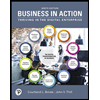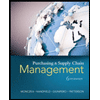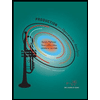Stocks A and B have the following probability distributions ofexpected future returns:Probability A B0.1 (10%) (35%)0.2 2 00.4 12 200.2 20 250.1 38 45a. Calculate the expected rate of return, r⁄B, for Stock B (r⁄A =12%).b. Calculate the standard deviation of expected returns, σA, for Stock A (σB =20.35%).Now calculate the coefficient of variation for Stock B. Is it possible that most investorswill regard Stock B as being less risky than Stock A? Explain.c. Assume the risk-free rate is 2.5%. What are the Sharpe ratios for Stocks A and B? Arethese calculations consistent with the information obtained from the coefficient ofvariation calculations in part b? Explain
Stocks A and B have the following probability distributions of
expected future returns:
Probability A B
0.1 (10%) (35%)
0.2 2 0
0.4 12 20
0.2 20 25
0.1 38 45
a. Calculate the expected
B, for Stock B (r⁄A =12%).
b. Calculate the standard deviation of expected returns, σA, for Stock A (σB =20.35%).
Now calculate the coefficient of variation for Stock B. Is it possible that most investors
will regard Stock B as being less risky than Stock A? Explain.
c. Assume the risk-free rate is 2.5%. What are the Sharpe ratios for Stocks A and B? Are
these calculations consistent with the information obtained from the coefficient of
variation calculations in part b? Explain
Trending now
This is a popular solution!
Step by step
Solved in 4 steps









